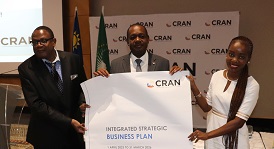
House prices continue to rise
“Based on our calculations, the income requirement for the lower price segment came in at N$15k per month. Less than 10% of the households in the country can afford a property in the lower price segment,”
In the recent FNB House Index figures, house prices increased by 29% year on year to bring the Index to 234.7 index points through June as house prices continued to increase in 2014 at a much faster pace than the long term trend over the past seven years said Namene Kalili, Manager Research and Competitor Intelligence at FNB Namibia Holdings Ltd.
Kalili said despite various policy interventions to increase new housing supply, volumes continued to trend downwards as fewer properties were traded from month to month and demand for properties continued to increase.
“It is this increased disparity between supply and demand that is driving house prices upwards so much so that Namibia had the second highest house price increase in the world after Dubai. At a median price of N$774,000, households must earn at least N$23,000 per month to afford an average property. This is almost three times the average household income for urban households in Namibia,” he said. “Based on our calculations, the income requirement for the lower price segment came in at N$15k per month. Less than 10% of the households in the country can afford a property in the lower price segment,” he added.
The FNB Housing index stated that land delivery remained weak at 61 stands mortgaged through June, with the trend beginning to point downwards. Land prices were 23% higher and averaged N$140,000 for a 410m² stand. A further 393, 800m² of land was mortgaged by developers, with a maximum potential for 920 free standing homes, which brought the cumulative house delivery potential to 7,950 free standing homes for 2014. However, developer activity had not filtered meaningfully into the new housing supply numbers as overall volumes continued to trend downwards.
When looking at the various areas in Namibia the housing index suggested that central property prices increased by 20% year on year to N$810,000, with most of the upward price pressure coming from the upper price segment, where property prices rose by 32% year on year to N$2,333,000 per unit. Property prices in the lower to middle price segment also increased, but at more modest rates of between 4 and 14 percent year on year on account. Coastal property prices increased by 25% year on year to a median price of N$956,000 and although property prices continue to increase, near term data shows that this price growth is tapering as the market moves towards its August peak. Kalili said, “Coastal property prices tend to track the tourism season and hence coastal property price growth was concentrated in the upper price segment, where property prices increased by 28% year on year to end the month at a median price of N$2,223,000.”













































